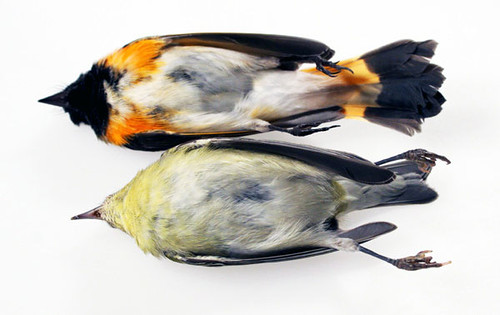Back in 1987 and 1988, when I was
fighting a battle to keep US West from constructing a tall, guyed, lighted cell
phone tower on our bird migration pathway, I made a disturbing discovery about
how powerful interests influence and skew news coverage. US West claimed that the tower
was essential, not only for starting up cell phone coverage in the area, but also
in order for people in Lakewood Township to get 911-service. (This was over a
year after Duluth had implemented 911, but many rural areas in the state still
did not have that essential service.)
So I called up the woman in
charge of implementing 911 services for St. Louis County. She told me that the
antenna that would link Lakewood Township to the 911 system was already
operational, on an existing tower in Duluth. The reason people in the township
didn’t yet have the service was because they were still in the process of switching
from rural route numbers to street addresses—that had to be done throughout the
entire serviced area first.
I immediately notified the News-Tribune reporter
who was covering the issue. He double-checked and confirmed my information. US
West refused to be interviewed, but the reporter included
the accurate information about 911 in his next story about the tower; somebody over his head
deleted that part before publication. And in every story, the News-Tribune continued to include a
paragraph straight out of US West's PR package about how cell phone towers are used to provide space for 911
antennas, irrelevant to this situation as this was, along with the line that
cell phone service “is used by police and fire departments where conventional
radio channels aren’t private enough or don’t have enough capacity,” although
that, too, was not an issue in this situation.
I was tired of being painted as someone who cared more about
birds than human beings, so I wrote a letter to the editor at the News Tribune
affirming the likelihood that the tower would kill significant numbers of birds
and explaining, with solid facts from the county, that construction of the
tower was in no way linked to 911 service in Lakewood Township. My letter was
printed in the paper, but with the entire paragraph about 911 cut out.
Fortunately, I’d sent the identical letter to the Duluth Budgeteer, which
printed it in full.
The Duluth News Tribune never acknowledged their role in deceiving the
public about how this tower had never been intended to be part of the 911 system.
They did make one significant policy change, though. After that, they started
requiring anyone who sent them a letter for publication to affirm that they had
not sent the same letter anywhere else.
I’ve been thinking about how easy
it is for the media to skew reporting while appearing, on the outside, “fair
and balanced,” as I see coverage of the Vikings Stadium glass issue. The issue
has been boiled down to one of “aesthetics,” and the media keep making it sound
like the fritted glass is “cloudy” and keeps light out.
Audubon Minnesota and other bird advocates have given the press abundant evidence that fritted glass is mostly transparent and very brilliant, and
also that it is much more energy efficient than the glass currently on order,
but the media completely leave those facts out of the discussion. The Javits Center, a major glass structure in New York, was constructed with the exact
fritted glass proposed as the bird-safe alternative for the Vikings Stadium.
The Dallas Cowboys’ stadium also uses this glass. But the media keep talking
as if the only alternatives are the beautiful plans or something dingy and ugly.
 |
| These are photos of New York's Javits Center, constructed with the same fritted, bird-safe glass we're proposing to be used for the Vikings Stadium. |
The public has been bamboozled into thinking this issue pits a beautiful stadium against saving a few birds, when it’s simply an issue of modifying one element of the beautiful design. The wiser glass choice will also save money and energy for both heating and cooling. But for some reason, the Minnesota Sports Facilities Authority dug in their heels long ago, even though the exact same company manufacturing the glass for this building manufactures the bird-safe alternative. And the Vikings—a huge income generator for news media in Minnesota—will not force the change, either.
Sadly, the concept of conflict of interest doesn’t keep the media from covering
a story that benefits their advertisers, and they’re limiting access to some of
the most important information. So not much has changed since 1987, has it?
(Ultimately, US West backed down and built a 99-foot, wooden pole cemented in the ground at the Lakewood Township site. Lacking lights and guy wires, this tower is safe for migrating birds, and still provides cell phone coverage for the area. I hope in the case of the Vikings Stadium, the truth will out, and we'll end up with an equally satisfactory solution for people and birds both.)


